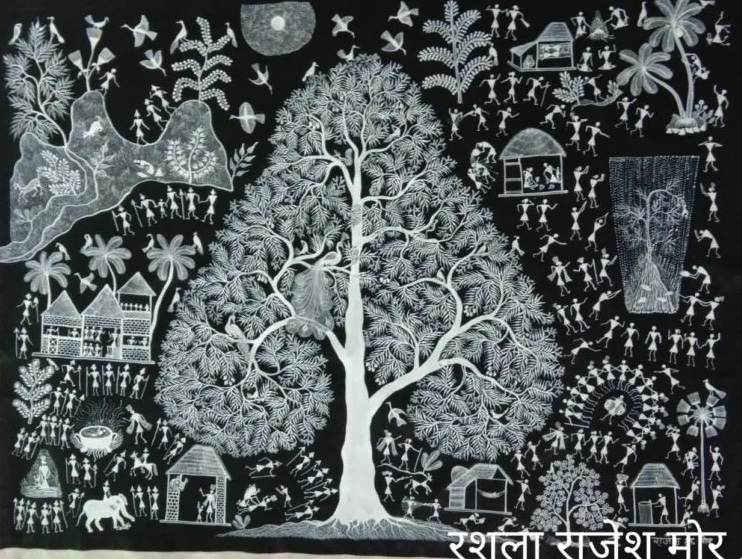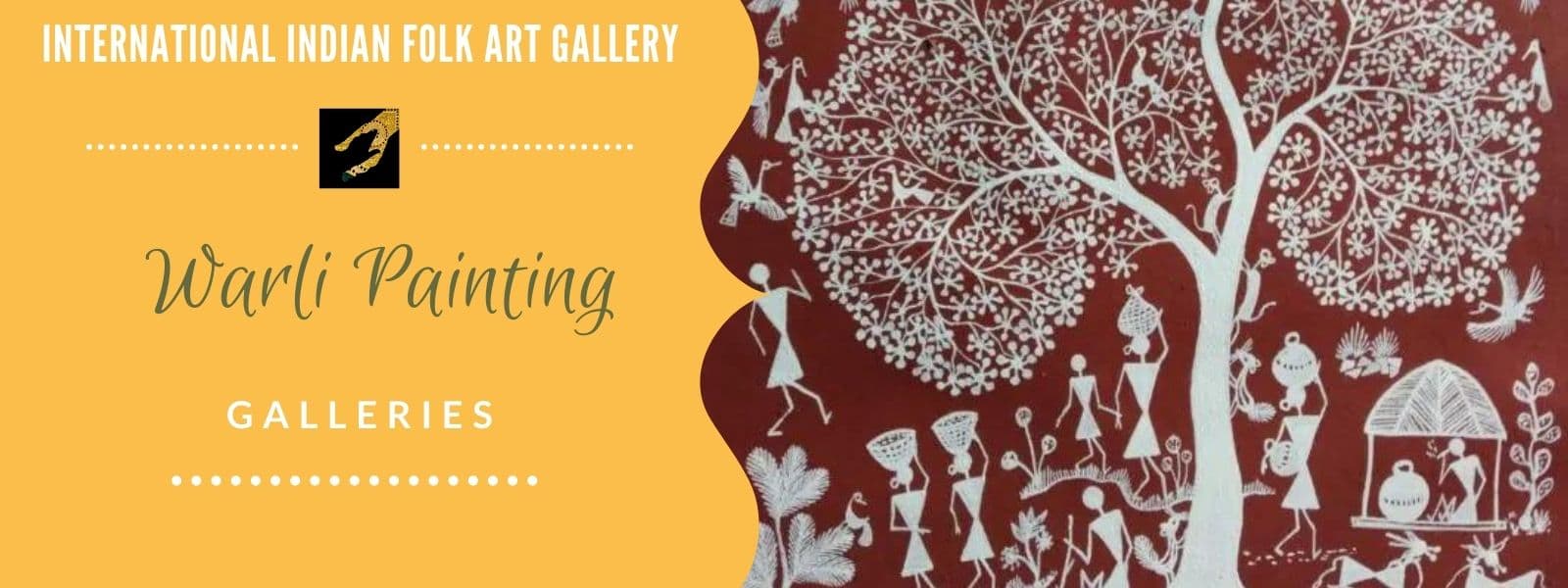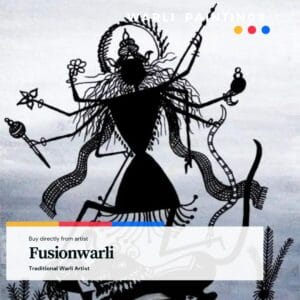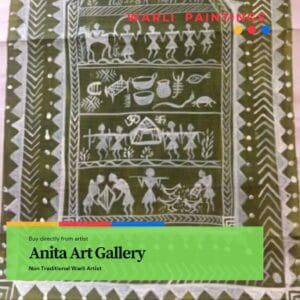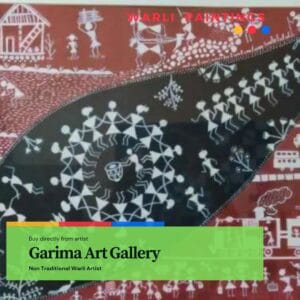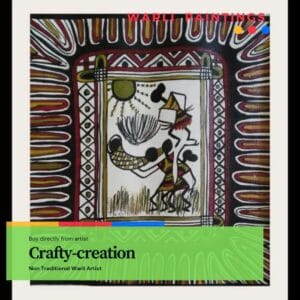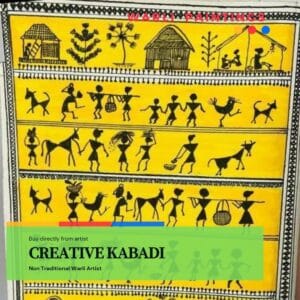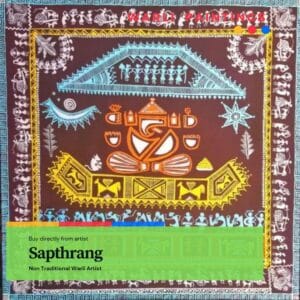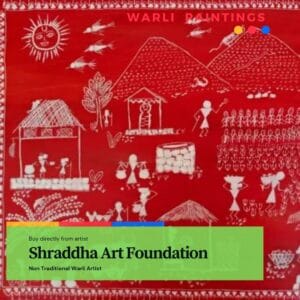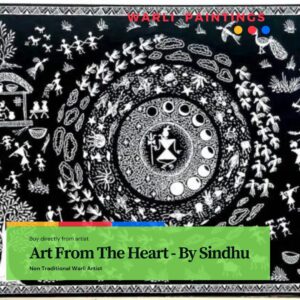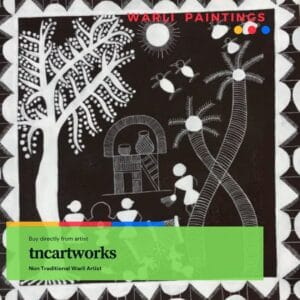Warli Painting
Warli painting from Maharashtra is one of the oldest styles of Indian folk art that’s managed to persist for thousands of years. Warli paintings are mainly created by Tribal people from North Sahyabadri Range in India.
The Warli tribe is one of the largest in India, located outside of Mumbai. Despite being close to one of the largest cities in India, The Warli culture is centered on the concept of Mother Nature and elements of nature are often focal points depicted in Warli painting.
Many Warli paintings depict the Tarpa dance as a central component. The Tarpa is a kind of trumpet-like instrument that different men take turns playing. The dancers pair up, intertwining their hands and circling the tarpa player. They then follow him in a turning and pressing manner; he can’t turn his back to them because they will always be around him.
Farmers make up a large proportion of the tribe and provide food for many people. They respect wildlife and nature because it’s important to their way of life as well as providing them with food.
Warli artists often use their clay huts as a backdrop for their paintings, as people did with the cave paintings before them. These basic wall paintings use simple geometric shapes: a circle, triangle and square.
These shapes represent different aspects of nature. The circle and the triangle come from their observation of nature. The circle represents the sun and the moon, while the triangle is derived from mountains and pointed trees.
The human body is represented by two intersecting triangles: the top triangle represents the torso, the bottom one the pelvis. Their precarious equilibrium symbolizes the balance of the universe. The representation also has the practical and amusing advantage of animating the bodies.
Warli art often depicts triangles which are different sizes depending on their gender. A triangle is usually larger or wider at the top if it represents a man, and wider towards the bottom if it represents a woman.
